Introduction:
IT Infrastructure Library (ITIL) is a library of best practices for managing IT services and improving IT support and service levels. The most essential part of ITIL is the configuration management database (CMDB), which provides the central authority for all components, including services, software, IT components, documents, users, and hardware that must be managed to deliver an IT service.
Adhering to IT Infrastructure Library (ITIL) principles helps ensure you can get to the root cause of environmental problems as quickly as possible and have the proper visibility into the systems and people to prevent future problems.
Understanding IT Infrastructure and ITIL:
When discussing IT infrastructure, it's essential to recognize that it encompasses physical and virtual components required to operate and manage IT environments. The definition includes hardware, software, networking components, operating systems (OS), and data storage, all used to deliver IT services and solutions.
Gaining an IT infrastructure library certification represents a significant step in understanding and applying IT service management best practices by the IT infrastructure library (ITIL) framework. Our IT infrastructure library training aims to equip professionals with the depth of knowledge needed to optimize IT services and contribute to business success.
Course Objectives:
At the end of this advanced IT infrastructure library (ITIL) course, the participants will be able to:
- Understand the advanced concepts and principles of ITIL.
- Apply ITIL practices to enhance IT service management.
- Develop skills for implementing ITIL processes in complex IT environments.
- Analyze ITIL frameworks to optimize IT service delivery.
- Integrate ITIL methodologies to improve operational efficiency.
- Enhance problem-solving abilities using ITIL strategies.
- Master the use of ITIL tools for effective service management.
- Align ITIL processes with organizational goals.
- Improve customer satisfaction through refined ITIL practices.
- Achieve continuous service improvement with ITIL techniques.
- Implement ITIL best practices to manage IT services effectively.
- Utilize ITIL for strategic planning and decision-making.
- Evaluate the impact of ITIL on IT governance and compliance.
- Foster collaboration and communication through ITIL practices.
- Leverage ITIL to drive digital transformation initiatives.
Targeted Competencies:
By the end of this advanced IT infrastructure library (ITIL) training, the participant's competencies will:
- Design, develop, and implement IT Service Management.
- Advanced ITIL Knowledge.
- Service Management Skills.
- ITIL Process Implementation.
- Strategic IT Planning.
- Operational Efficiency.
- Problem-Solving Abilities.
- ITIL Tool Mastery.
- Customer Service Excellence.
- IT Governance Understanding.
- ITIL Framework Analysis.
- ITIL Best Practices Application.
- Change Management Proficiency.
- Incident Management Expertise.
- Collaboration and Communication.
- Digital Transformation Leadership.
Targeted Groups:
- Technology Engineers, Chief Technology Officer (CTO) and Chief Information Officer (CIO).
- Chief Risk Officers.
- Senior In-house Legal Counsel.
- Human Resource Professionals.
- Critical Application Development and Data Research Personnel.
- Strategic Development Directors.
- IT Managers.
- Service Delivery Managers.
- IT Consultants.
- IT Project Managers.
- IT Service Desk Managers.
- Operations Managers.
- IT Support Staff.
- IT Process Managers.
- Infrastructure Managers.
- IT Governance Professionals.
- Senior IT Executives.
- IT Compliance Officers.
- Change Managers.
- Incident Managers.
- IT Analysts.
Course Content:
Unit 1: Advanced ITIL Concepts and Principles:
- In-depth understanding of ITIL principles.
- Exploration of advanced ITIL terminologies.
- Detailed study of ITIL lifecycle stages.
- Examination of the ITIL service value system.
- Integration of ITIL with other frameworks.
- Analysis of ITIL's role in modern IT environments.
Unit 2: ITIL Service Management Practices:
- Application of ITIL practices to service management.
- Techniques for managing IT services efficiently.
- Implementation of ITIL processes in complex scenarios.
- Best practices for service design and transition.
- Strategies for effective service operation and improvement.
- Methods for aligning IT services with business objectives.
Unit 3: ITIL Process Implementation:
- A step-by-step guide to ITIL process implementation.
- Case studies of successful ITIL deployments.
- Identification of crucial ITIL processes for various environments.
- Customization of ITIL processes to organizational needs.
- Monitoring and evaluating ITIL process performance.
- Overcoming common challenges in ITIL implementation.
Unit 4: ITIL Tools and Technologies:
- Overview of ITIL-compliant tools and technologies.
- Selection criteria for ITIL tools.
- Integration of ITIL tools with existing systems.
- Usage of ITIL tools for incident and problem management.
- Enhancing service desk operations with ITIL tools.
- Automation of ITIL processes for efficiency gains.
Unit 5: Continuous Service Improvement with ITIL:
- Principles of continuous service improvement (CSI).
- Techniques for identifying improvement opportunities.
- Utilization of metrics and KPIs for performance measurement.
- Implementation of CSI initiatives.
- Case studies on achieving significant service improvements.
- Strategies for fostering a culture of continuous improvement.
Conclusion:
Obtaining an ITIL certification is essential for IT professionals who wish to understand the ITIL course and framework thoroughly. It's critical for those seeking to improve the efficiency and reliability of IT services within an organization. What is ITIL training? It's more than just a certificate; it's a way to bring industry-recognized practices to your IT environment, ensuring a solid and reliable advanced IT infrastructure.


